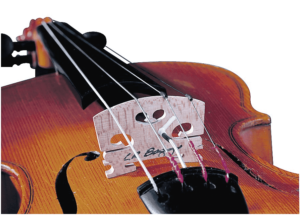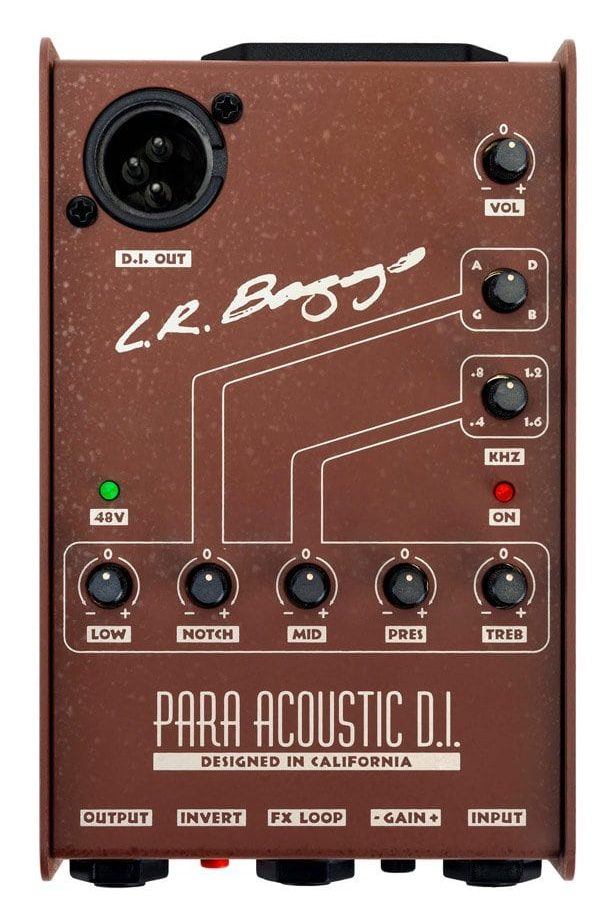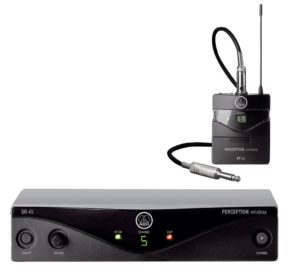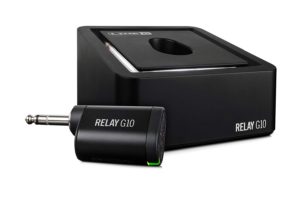Overview

The LR Baggs violin pickup is a piezoelectric microphone carefully designed to pick up the dynamic range of a violin sound. There are many microphones that can be used for miking a violin, but regular microphones have a flaw when used live stages, and that is feedback.
In case you don’t know a piezoelectric pickup is a type of microphone that can convert or transduce physical vibrations from an instrument into voltage. This is achieved when sound waves bend back and forth the piezoelectric material, creating a changing voltage.
Piezo microphone pickups are usually used with stringed instruments such as guitars, and bowed string instruments like violin, cello, viola, and double bass, giving excellent results.
The LR Baggs microphone is carefully installed inside the bridge of the violin in the factory. The advantage is that there is more sensitivity and better signal transfer directly from the bridge.
This pickup minimizes to a maximum the problem of feedback because this microphone is not open to air eliminating the possibility of picking up noise from the stage. Dynamic or condenser microphones being that they use a membrane or diaphragm are more sensitive thus being more susceptible to feedback.
As you may know, the bridge is one of the most important parts of the violin because this is what holds the strings and transfers the vibrations from the strings to the body of the instruments. This important part of the violin provides 20% of the acoustic output.
By having a piezo pickup installed right at the point where vibrations are being transferred from the strings gives you the advantage of capturing the true dynamics of the sound being generated.
Thanks to its size and placement this pickup also minimizes finger squeaks and body noise because it rejects impulses directed to the plane of the bridge.
Features
- The pickup is installed inside a French-made Superieur Despiau “Two Tree” maple bridge.
- Even string-to-string balance
- Highly feedback-resistant
- External jack mount or Non-terminated
Pros
- The sound of this pickup is very natural.
- With a preamp, it can deliver volumes as an electric violin would but with a more natural sound.
- Very resistant to feedback.
Cons
- Users have mentioned that it could require some equalization to eliminate bow noise.
- Not recommended for recording because it will not sound as clear as a studio condenser microphone.
Sound Sample of the LR Baggs Violin Pickup
How to Install the LR Baggs Violin Pickup
Although this pickup bridge can be installed by a knowledgeable user, LR Baggs recommends that this product be installed by a professional luthier because it entitles the adaptation of the new bridge. As they mention on their website they don’t provide installation advice or support for home or hobbyist installations.
If you decide to install it yourself LR Baggs will not be responsible for any damage to the violin or personal injury resulting from installation, improper installation, use or misuse of the product.
Also, a disclaimer from virtuosocentral.com we are not responsible for any damage to your instrument or personal injury if you decide to install it yourself.
Step by Step Installation
- Loosen all strings and remove the old bridge.
- Place the feet of the pickup bridge to the violin and make sure the pickup wire faces the chin rest for proper balance.
- Place the old bridge next to the new pickup bridge on the violin for proper string alignment and trace its outline.
- After the new bridge has the outline of the old bridge, remove it and very carefully trim the excess wood from the top of the new bridge and cut proper notches for the strings.
- You may remove as much as .032″ from the entire front face of the bridge to voice the violin.
- Carefully sand the bridge on its face on a flat surface. Above the heart, remove as much material as needed to match the old bridge. Do not sand or shape the bridge’s backside where the pickup is installed.
- Place the new bridge on the violin and bridge the strings up to pitch very slowly. Be sure that that the bridge does not bow, flex or tip during this process. Note: Exercise care during this delicate process, failing to do so can damage the pickup.
- Attach the Carpenter jack to the area next to and just in front of the chin rest. Carefully solder the pickup to the jack following the instructions provided with the jack.
Warning: Do not put any pressure on the wire where it meets the bridge when shaping and fitting the pickup.
Note: If a slight bend starts to develop in the bridge, straighten it carefully. Also, do not tug on the wire. With proper care, your Baggs pickup should last for many years.
Do I need a Preamp for the LR Baggs Violin Pickup?

A preamp is not necessary but recommended. The pickup needs to be plugged into an instrument amplifier or PA system that has an input impedance of at least 1 megaohm or higher to get the most out of this pickup. If it sounds thin and screechy, make sure to check the impedance.
As recommended by LR Baggs to get superior sound results, use a Baggs preamp specially designed to fit this microphone such as the PARA DI Acoustic Box, then send the signal to the instrument amplifier or high-quality full-range PA system.
Recommended Gear for Making the LR Baggs Violin Pickup Wireless
For the LR Baggs bridge pickup to work it just needs to be plugged into an instrument amplifier or PA system, but having a cable hanging around as you play is uncomfortable and unpractical especially if you like to walk on stage.
There are some great wireless packs that can be used to convert this great microphone into wireless. I am going to mention a couple of affordable yet of great sound quality wireless system packs for acoustic instruments.
AKG Perception Wireless Instrumental

The AKG Perception Wireless Instrumental Set is an affordable wireless pack for instruments. It delivers good sound and can be used for many applications. It includes the PT45 body-pack transmitter which is small and lightweight. It provides a professional three-pin mini XLR to 1/4” Jack cable to plug in the instrument, the receiver, and the power adapter.
Some of the features of the PT45 body-pack is the gain control knob for perfect adjustment of the input volume, noiseless on/off/mute switch, a battery-status indicator, allowing the user full control of performance time. With one AA battery, the playtime is 8 hours. The audio bandwidth is from 40 Hz to 20 kHz providing a wide frequency range perfect for acoustic instruments.
The SR45 receiver is an analog high-performance space diversity wireless receiver that provides maximum ease of use with different channel presets up to eight channels. It also features an audio clipping and RF signal LED for easy monitoring of systems status. For worldwide use, the receiver comes with a universal switched-mode power supply kit.
Line 6 Relay G10 Wireless

The package includes a small transmitter, the receiver that also acts as a charging station for the transmitter and power supply. There is nothing to set up with this unit, all you have to do is plug the transmitter to your violin, connect the receiver to the amp or PA system and play, that simple. Each charge lasts 8 hours.
The system scans all the available channels and chooses one that has less interference. It also has a cool feature that when connecting or disconnecting it from the violin it auto-mutes so that there is no popping noise, a great feature if you have to change from one instrument to another.
The is no latency or delay from the signal while using this device. The latency is set to 2.9ms so small that is impractical to even measure it. The system is rated for 50’ range.
About the sound quality, you will be pleased to know that the Line 6 Relay G10 retains the tone and color of the violin’s sound. There is no loss of sound quality it will sound just as if you were using a cable but with the freedom of wireless.
There is an updated version, the Line 6 Relay G10S it has the same great features but with an increased range of 130’ and an option to manually select the channel to be used.
Conclusion
If you are in the market for a pickup for acoustic violin, the LR Baggs is highly recommended because it is of great quality, it captures the violin sound and dynamics very well plus thanks that it’s a piezo pickup it minimizes feedback.
This is a great option for violin players that want to amplify their instrument while keeping the tone and color of the violin sound as close to the original sound.